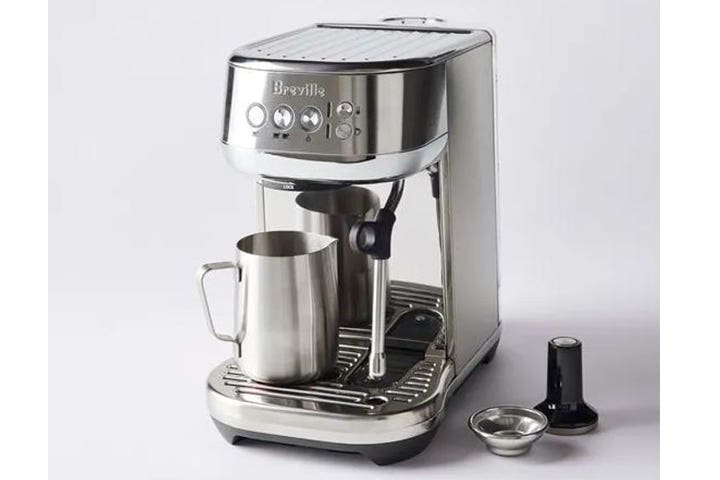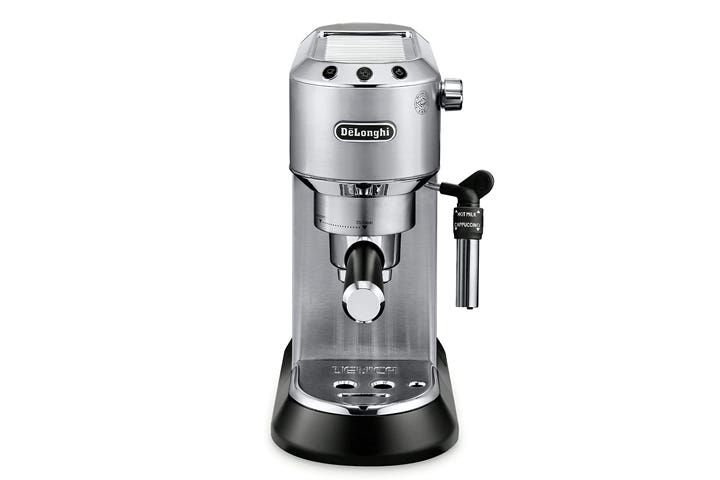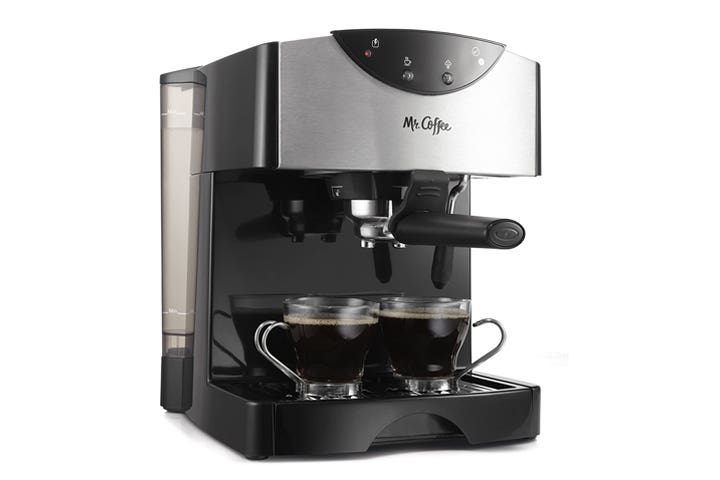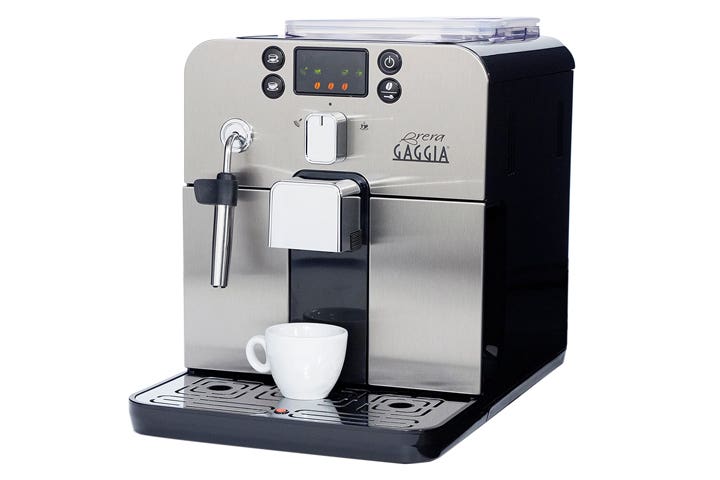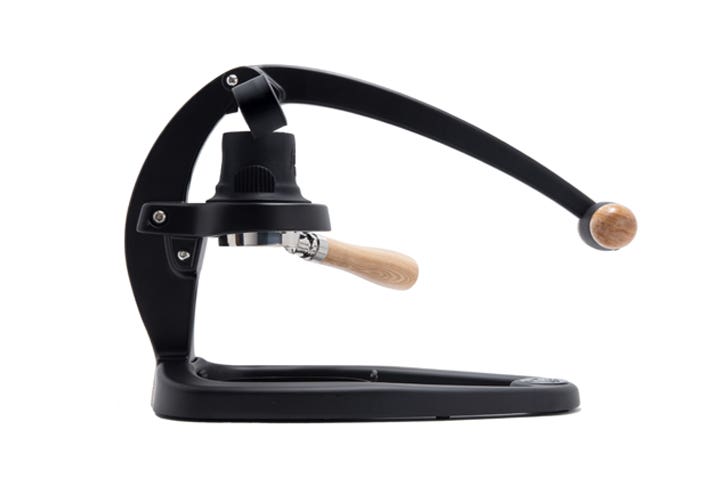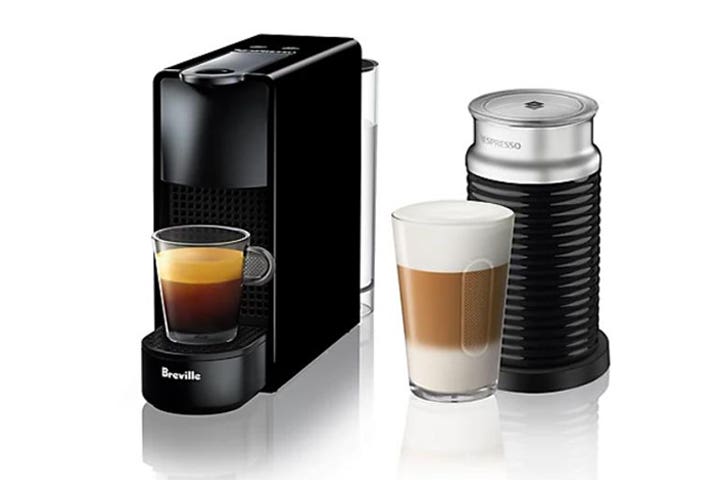The Best Espresso Machines Under $500 Raise The Bar
Better doesn’t always mean more expensive—check out these machines that are $500 or less.
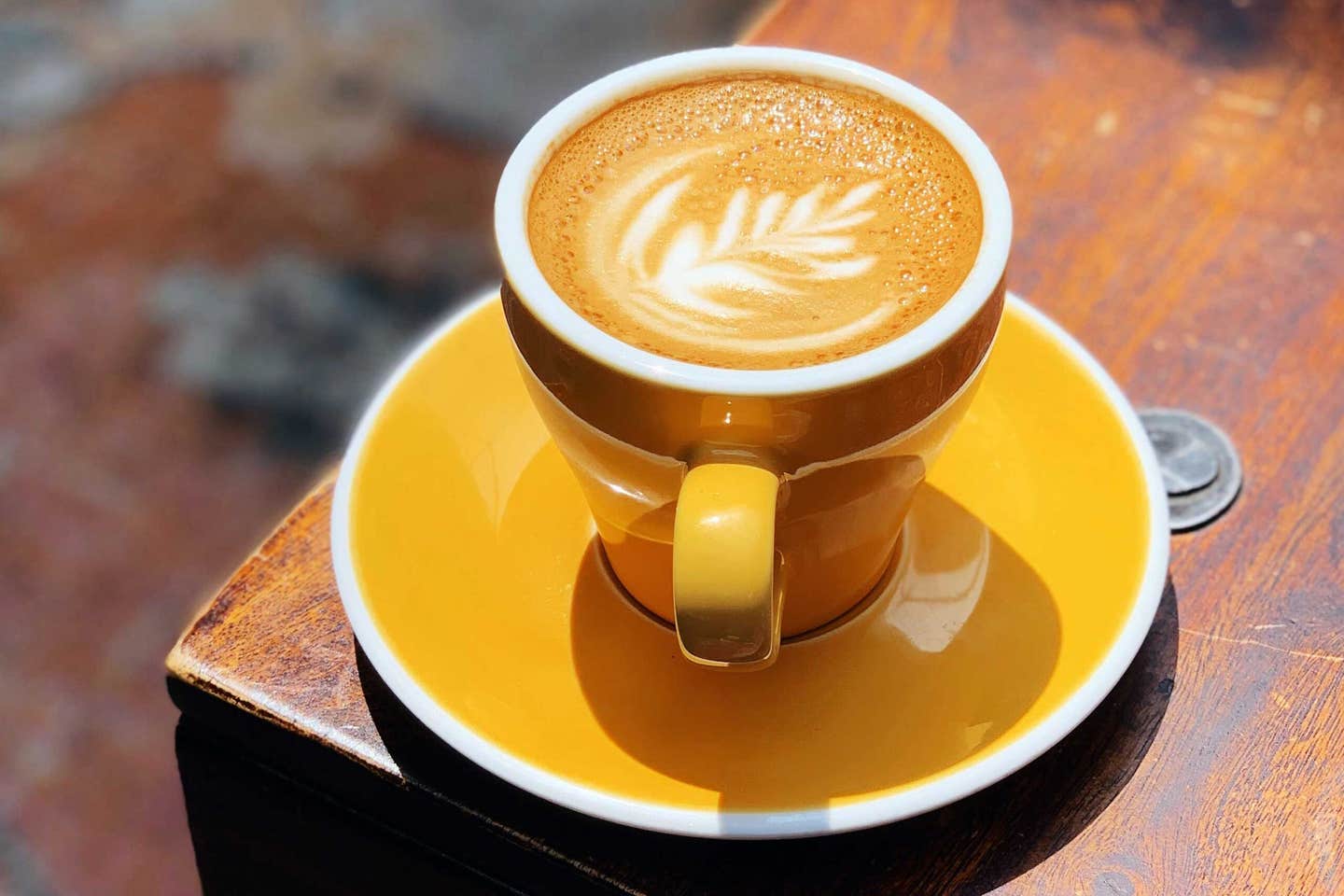
You don’t need to be a master barista to appreciate an at-home espresso. However, with options that run from $50 to $5,000, it’s hard to know how much you need to spend to purchase a quality appliance—and how much it really matters, anyway. To guide you through the selection process, we exclusively focused on espresso machines under $500, curating a list of appliances that can pull great espresso shots and aerate frothy milk without requiring such a large investment.
To help choose the best picks, we tapped several roastmasters, cafe owners, and coffee experts to find out what machines are best, and why. Arsalan Pourmand, founder and roaster of Flux Coffee in Farmingdale, New York, says “Espresso is like an equation, and the espresso machine is just one of the variables. An expensive machine doesn't mean your espresso will be better, it just means the machine can help with some of the variables.”
The following espresso machines, which include options from manual pull levers to super automatic, focus on the key variables: espresso quality, bars of pressure, included tools, and ease of use. And, of course, we considered the cost. With these vetted espresso machines, you can satisfy your caffeine fix at any price point.
- Best Overall: Breville Bambino Plus Espresso Machine
- Best Automatic: De'Longhi Dedica Deluxe Automatic Espresso Machine
- Best Budget: Mr. Coffee Automatic Dual Shot Espresso/Cappuccino System
- Best for Beginners: Gaggia Brera Super-Automatic Espresso Machine
- Best Professional: Flair 58x
- Best for Pods: Nespresso® by Breville® Essenza Mini Espresso Maker Bundle with Aeroccino Frother in Black
Best Overall: Breville Bambino Plus Espresso Machine
Best Overall
Weight: 11 pounds | Shot volume: Double | Brewing pressure: Nine bars
Pros
- Compact
- Speedy
- Barista-quality espresso
Cons
- No included grinder
- Espresso may be too cold for some
- Can be difficult to clean
Why we chose it: A fast, compact, and beginner-friendly machine that steams milk to your preference.
Designed to focus on Breville’s four key formulas—”rich flavor, balanced taste, irresistible body, and silky mouthfeel”—the Breville Bambino Plus delivers barista-quality espresso in just a few seconds. Like any espresso machine, there is a learning curve, but it’s easy to maneuver and will result in rich, consistent shots of espresso. Best of all, this machine allows users to steam milk manually or with an auto-froth feature consisting of three settings for both temperature and texture. It doesn’t include a grinder and it can be tricky to clean, but those are small prices to pay for a high-quality automatic espresso machine that’s well under $1,000.
Best Automatic: De'Longhi Dedica Deluxe Automatic Espresso Machine
Best Automatic
Weight: Eight pounds | Shot volume: Double | Brewing pressure: 15 bars
Pros
- Accommodates larger mugs
- Warms quickly
- Consistent espresso
Cons
- No included grinder
- Can be difficult to clean
Why we chose it: A small, sleek machine with an automatic stop feature.
With 15 bars of pressure and a 35-second brewing time, the De’Longhi Dedica Deluxe delivers solid shots of espresso with minimal hassle. The machine includes an automatic flow stop, pouring the perfect amount of espresso for a single or double shot. We do find that the milk frother takes a bit of practice to get the hang of, producing good foam but a less-velvety texture than the Breville Bambino. Overall, though, it’s a high-quality machine that’s going to deliver reliable results. As Kaleena Teoh, Director of Education at the Academy at Coffee Project NY, says, “Breville’s Bambino Plus and De’Longhi’s Dedica Deluxe espresso machines are great as espresso machines under $500. They are able to deliver consistent shots of espresso and you can usually choose between manual or automatic milk frothing, giving you the freedom of convenience or craft.”
Best Budget
Weight: Eight pounds | Shot volume: Double | Brewing pressure: 15 bars
Pros
- Less than $100
- Compact
- Satisfactory espresso
Cons
- Basic
- Plastic construction
- Awkward frother
Why we chose it: A capable machine with an unbeatable price point.
The Mr. Coffee espresso machine may not have a ton of bells and whistles, but it certainly gets the job done. And, of course, the price point cannot be beat. The machine does not include a grinder but it does come with the basics, including a milk frother that can be used to make lattes and cappuccinos. The frother is placed in an awkward position and the plastic tamper can be a bit flimsy, which could make it difficult to pack the coffee evenly. However, once you’ve mastered the machine, you’ll get an adequate caffeine fix without a ton of hassle.
Best for Beginners: Gaggia Brera Super-Automatic Espresso Machine
Best for Beginners
Weight: 22 pounds | Shot volume: Double | Brewing pressure: 15 bars
Pros
- Intuitive
- Fast
- Easy to clean
Cons
- Will routinely rinse out water, even on standby mode
- Wider than other machines
- Must be descaled manually
Why we chose it: A user-friendly machine that does all the work for you.
A sturdy machine that’s built to last, the Gaggia Brera is perfect for the espresso lover who prefers their shots poured with just the press of a button. Unlike many other machines on this list, it’s wider than it is tall, meaning it can be stored in a cabinet if you can spare the shelf space. With a bean grinder that can hold up to eight ounces of coffee beans and a built-in grinder, the machine allows users to choose between five different grind sizes and three different brew strengths. If you want to use pre-ground coffee, you can easily bypass the grind step, too. The included milk frother whips up velvety smooth lattes and foamy cappuccinos, and it heats in seconds. The machine does include an automatic rinse cycle that will run when turned on and again when set to standby, so always have a mug ready to catch drips. Additionally, the machine will still need to be descaled manually, but it does alert you when that needs to be done.
Best Professional: Flair 58x
Best Professional
Weight: Eight pounds | Shot volume: Double | Brewing pressure: Nine bar
Pros
- Portable
- Easy to clean
- Cafe-quality espresso
Cons
- No included grinder or milk steamer
- Requires a professional-grade espresso grinder
- Steep learning curve
Why we chose it: A professional-grade, fully manual espresso maker that produces cafe-quality shots.
Not for the faint of heart, the Flair 58x is a professional-level manual espresso machine that’s sturdily constructed and aesthetically pleasing. “This is not for a casual drinker of espresso,” Pourmand says. “It's a fully manual, lever-action espresso machine that allows for pressure profiling. It has commercial portafilters and will allow you to pull some amazingly delicious shots. It does not have a grinder or anything to steam milk. And you will need to have at least a prosumer espresso grinder.”
Best for Pods
Weight: Eight pounds | Shot volume: Double | Brewing pressure: Nine bar
Pros
- Includes a hot and cold milk frother
- Easy to use
- Apartment-friendly
Cons
- Not compatible with all mugs
- Small water reservoir
- Loud
Why we chose it: A small, sleek machine that brews espresso with the press of a button.
If your caffeine fix relies on convenience, you’ll love this mini Nespresso machine. Offering espresso in two sizes, it’s enough to provide shots for one or two people in the morning. However, the best part is the included milk frother, which can foam milk to be hot or cold with the touch of a button. The frother can run while the machine is brewing, making it extra convenient for those who love lattes or cappuccinos. The machine is not compatible with large mugs, so you’ll need to use a smaller option when brewing. Additionally, it brews rather loudly and has a small water reservoir, though that’s not necessarily a bad thing, since fresher water makes for fresher espresso.
Things to Consider Before Buying an Espresso Machine Under $500
Price
It’s commonly believed that the more expensive an espresso machine costs, the better it is. However, that’s simply not true. “Expensive doesn't mean better, ever,” Pourmand says. “If you're competent in dialing in espresso and being able to manipulate the grind and your ratio properly, you can have delicious espresso out of almost any machine. I would go as far as to argue that your grinder is more important than your espresso machine.”
Needs
Don’t buy a manual espresso machine if you need to grab your espresso and go. “I would highly suggest considering how much work you would like to invest in making your cup of joe in the morning,” Teoh says. “If convenience is more important, then go with a super-automatic machine where the coffee will be ready with a touch of a button. If the ability to personalize your espresso shot, texture your milk, and pour latte art is important, then consider buying a semi-automatic machine.”
Tools
Espresso machines require several accompanying accessories—including a grinder, tamper, milk frother, and a frothing pitcher. Super automatic espresso machines, like the Gaggia Brera, will include everything. Automatic and semi-automatic machines will only have some of the tools, depending on the model. Of all the necessary tools, the grinder is the one to really invest in.
Pete Leonard, the founder and roastmaster of I Have a Bean in Wheaton, Illinois, says “When it comes to getting a great shot of espresso, the grinder is much more important (and more expensive) than the espresso machine is. The right grinder can make the espresso from just about any consumer machine taste good. Conversely, you can spend $30,000 on the best espresso machine on the planet and never get a decent shot of espresso from it if you have an inadequate grinder.” View our recommendations for the best coffee grinders here.
Beans
You can’t brew espresso with coffee beans, and the quality of the beans matters. “Invest in good coffee,” Teoh says. “Your cup of coffee will only be as good as the ingredient you make the coffee with. Support local roaster and buy freshly roasted beans. Not only are you supporting a small business, you are doing yourself a favor in getting a great cup of coffee.”
Ask the Experts
How much should I spend on an espresso machine?
“It really depends on your budget and what functionality you need it to have,” Teoh says. As Pourmand mentioned, expensive doesn’t mean better. Look for something that suits both your budget and your lifestyle.
Are 15 bars enough for espresso?
A bar is a measurement for the amount of pressure used to push water through the ground coffee beans, which makes espresso. It’s commonly believed that nine bars is the minimum amount of pressure needed, but, according to Teoh and Pourmand, that’s an outdated belief. “It's a very old fashioned way of thinking about espresso,” Pourmand says. “At our shop, we pull shots using six bars. The amount of pressure that's being used is one of the variables. Anything over 10 bars and you're going to have channeling (when water passes through weak spots in the coffee instead of pouring evenly), anything under two bars and the shots will be less rich, flavorful, and aromatic.” Similarly, Teoh agrees that a lower pressure can be sufficient. “Newer research and technology suggests that we can extract coffee using lower pressure and get a consistently good result,” she says.
Which espresso machine should I buy for home?
Again, the right espresso machine depends on your budget and lifestyle. Overall, we suggest the Breville Bambino Plus for its speed, milk frother, and high-quality results.
Final Thoughts
Though it is on the higher end of the price range, we couldn’t resist picking the Breville Bambino Plus as our top choice. It ranked above the rest for its milk frother, speed, and compact design, plus it pulls rich, smooth espresso shots. It’s a no-brainer for serious espresso lovers, and can suit most needs and lifestyles.
Methodology
When conducting our research, we compared several qualities of different espresso machines: design, speed, included tools, and ease when cleaning. And, above all, we had to compare the quality of the espresso shots each machine produced. We also looked into the automatic and manual functions of the espresso machines, ensuring that we included a range of options to suit everyone from grab-and-go espresso drinkers to those who love the luxurious process of making a cappuccino.
To assist with our research, we spoke with several coffee experts: Arsalan Pourmand, founder and roastmaster of Flux Coffee, Kaleena Teoh, Director of Education at the Academy at Coffee Project NY, and Pete Leonard, the founder and roastmaster of I Have a Bean. We chatted with each of them about their recommended espresso machines, why they love them, and what they believe is needed to pour a delicious shot of espresso.
Keep Reading
Continue to Next Story
